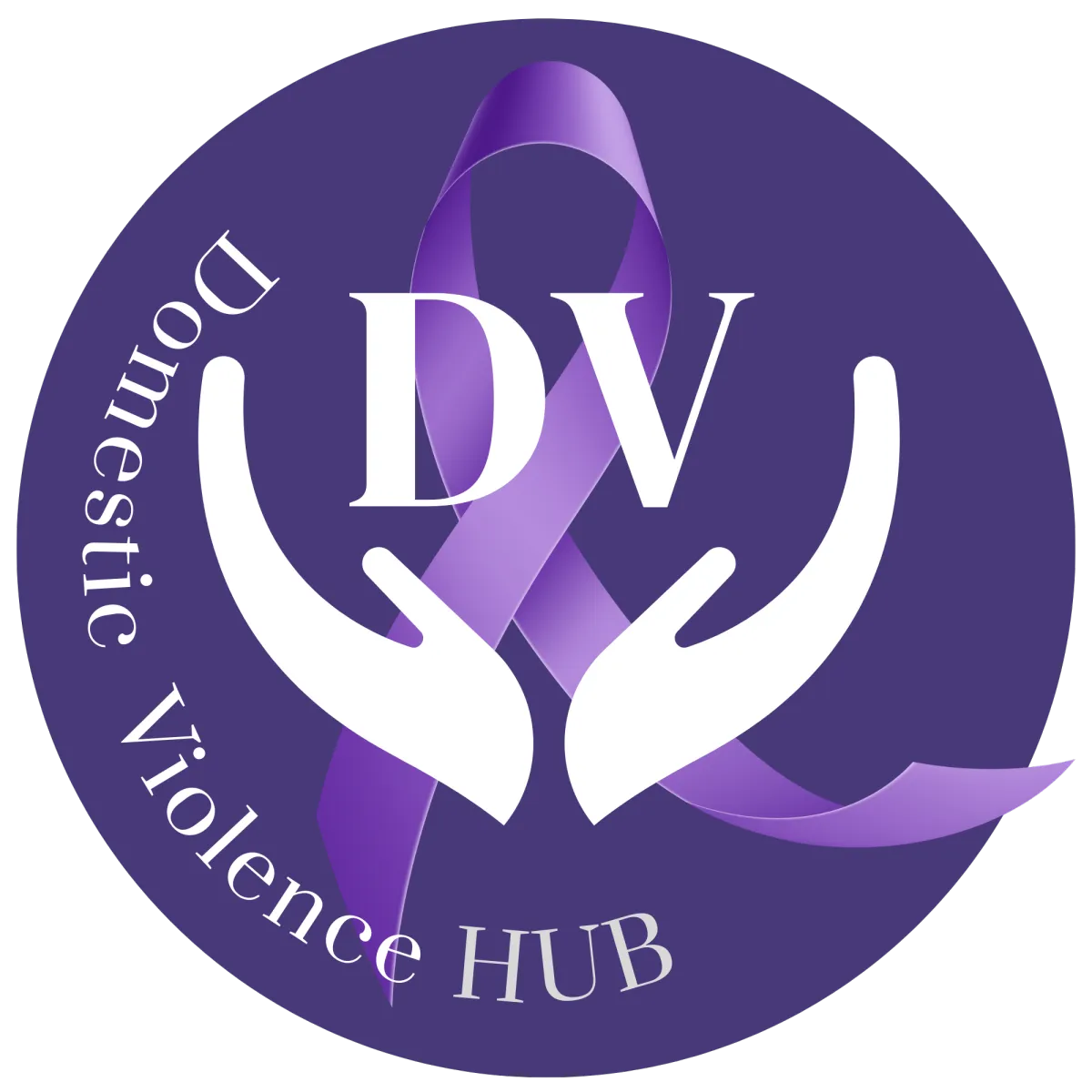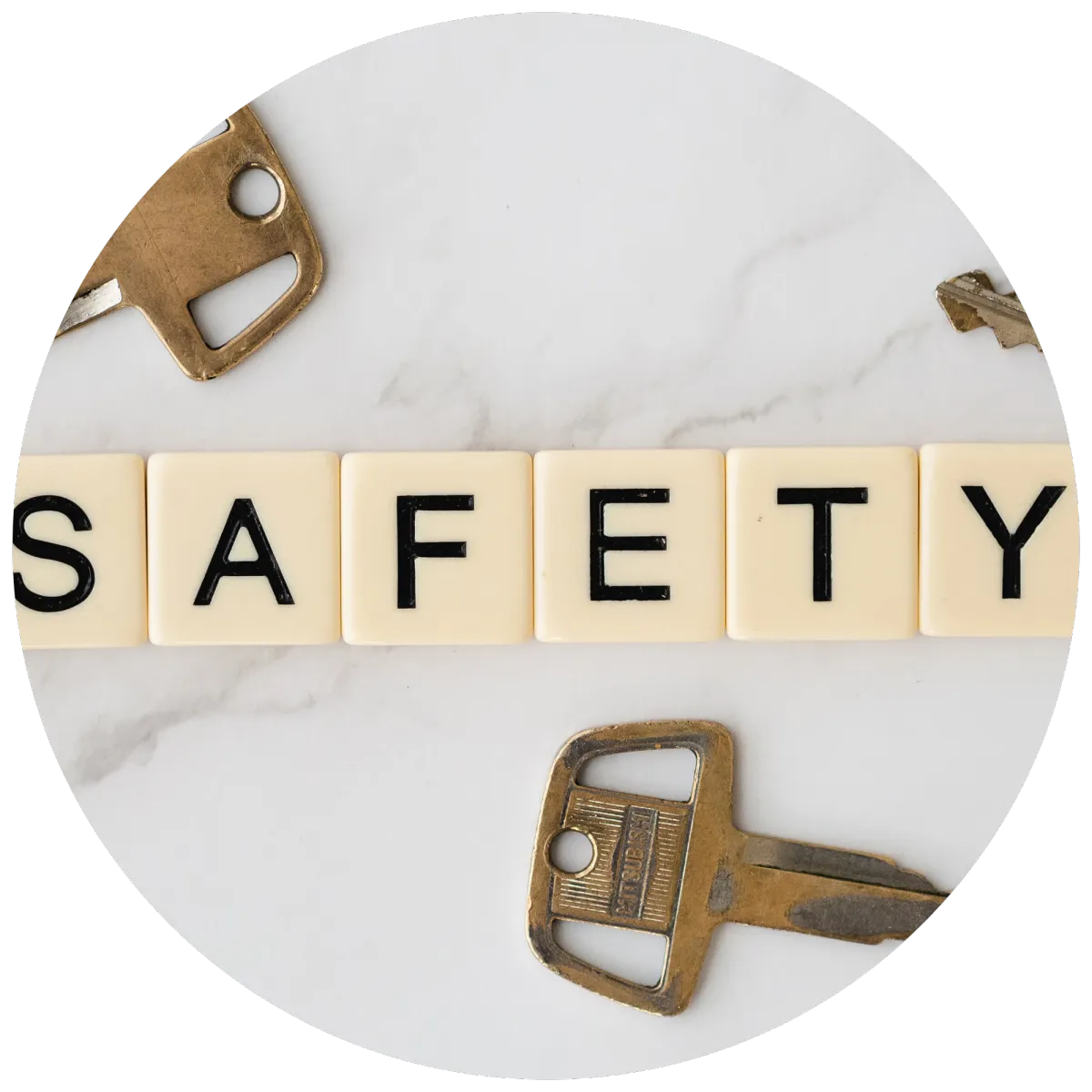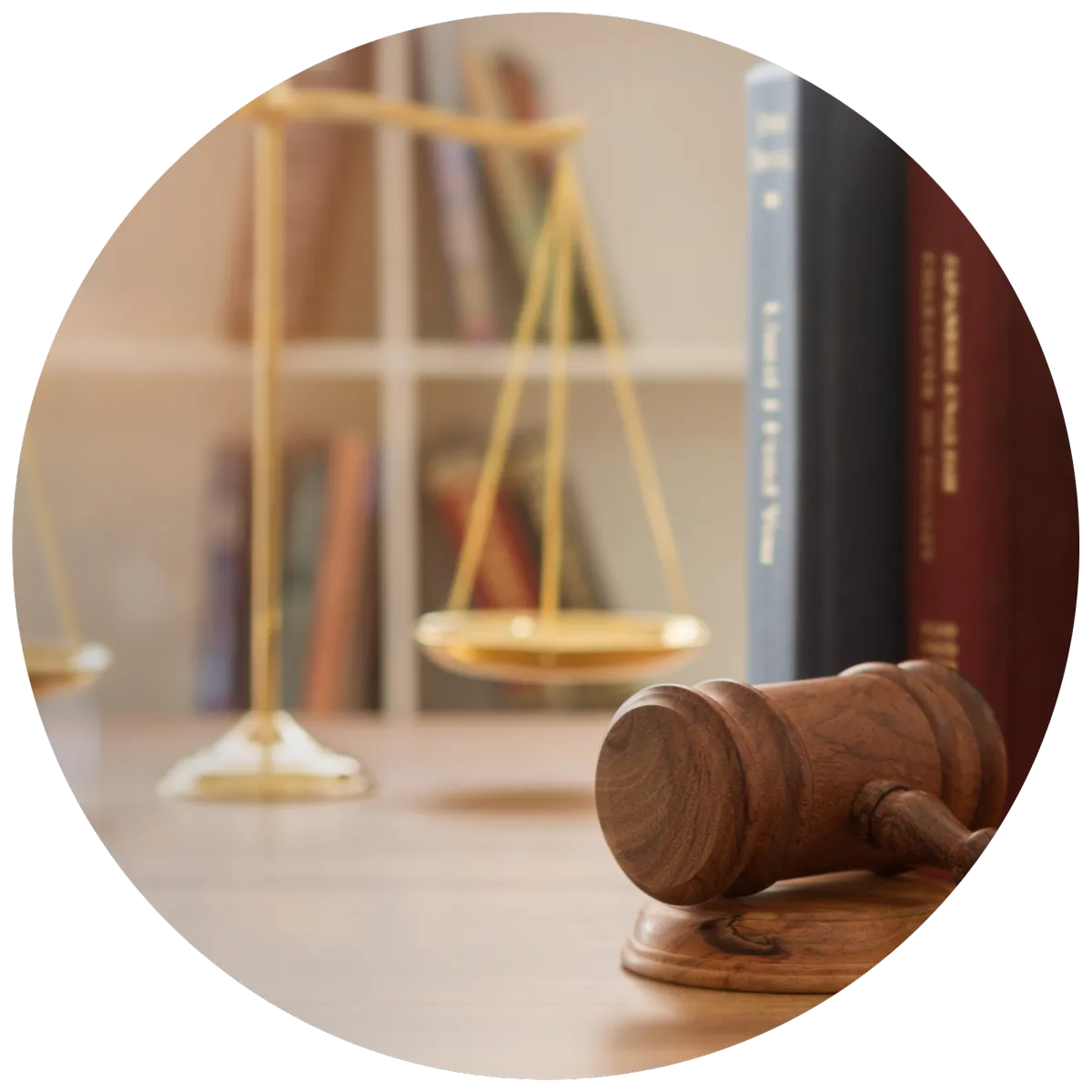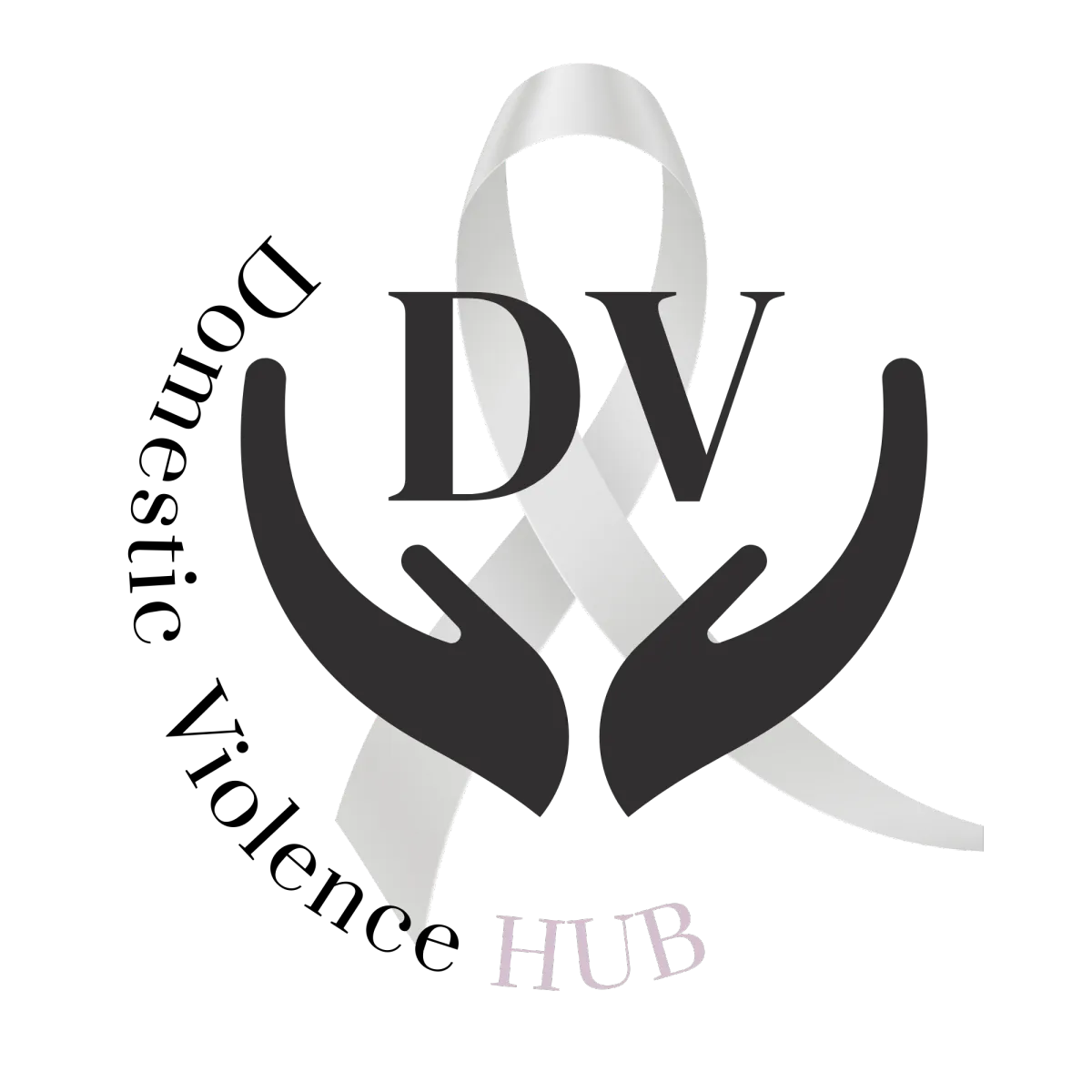DV Evidence Gathering
The DV Support Hub, provides FREE consolidated information on Australian domestic and family violence matters.
It is just one of the many hubs provided for free through Family Counselling Support Network, to Australians. If you, or are family member, are facing family and domestic violence or supporting someone who is, this hub provides information, resources and a guide on how to find support, keep safe, access resources and move forward safely with independence and greater confidence.
We endeavour to keep this information as up to date as possible.
This site is dedicated to the memory of all those who have lost their lives and the resilience of survivors.
If you have arrived at this hub because you or your loved one or friend is in need of support, we are extremely proud of you.
If you have arrived at this hub because you are seeking support to help find solutions to deal with your emotions, great move, we are also here for you to get the support you need.
Please know there is love and support for you. You've Got This.
There is never an excuse for abuse.

Court documents and legal documents will be reviewed during court proceedings to determine whether a protection order should be granted. These documents include the DVO application form, witness statements, and any other relevant evidence submitted.
To substantiate a DVO application, the applicant must provide evidence of acts of domestic violence. This includes instances of any type of abuse and patterns of controlling behaviour or stalking.
What evidence can be provided and how to best capture this evidence to support your application.
Understanding the DVO Application process
A Domestic Violence Order (DVO) is a legal order issued by the court to protect individuals from domestic violence, which may include physical, psychological, and emotional abuse. The process begins with the DVO application, which can be lodged at the local Magistrates’ Court. It can be an interim or
To get a domestic violence order, you must prove:
there is a relevant relationship
here has been a past act of domestic violence
an order is needed or desirable.
Applying for an urgent domestic violence protection order
If you or your children are at risk of immediate harm, call the police. In an emergency, call 000. Get legal advice.
If you think you need an urgent temporary protection order, ask to speak to either the court registry staff or a police officer.
You’ll go to court soon after you apply—before the respondent is told about your application. You’ll be given another date when you and the respondent will have to go to court to tell the magistrate about your situation. If you have a lawyer, they may be able to go to this court hearing for you.
Applying for a non-urgent domestic violence protection order
After you’ve submitted your application, you’ll be given a date to go to court. The date and a copy of your application will be given to the respondent.
The respondent can choose to:
agree to a domestic violence order being made
oppose the application for an order
ask for another court date to give them time to get legal advice.
If the respondent disagrees with the application for a domestic violence order, another court date will be made for a hearing.
For more information on the Domestic and Family Violence Orders and Court Process and how it works refer to this website at-
Evidence to support your applications
Understanding the evidence required is vital for the success of your application and for ensuring your personal safety. This is particularly true for any coercive control and/or stalking based applications where it is often a series of events/incidents/texts etc that have resulted in a pattern of concerning behaviour that all needs to be documented.
What Evidence Do You Need to help get you the protection you need
If you need to apply for a Domestic Violence Order (DVO), it is crucial to present sufficient evidence to support your application. A DVO aims to protect individuals from domestic violence and can be obtained through the Magistrates Court.
Each state of Australia has different legislation which outlines the measures to protect individuals from domestic and family violence but each of the laws aim to protect individuals from domestic and family violence. Key provisions include the issuance of protection orders to ensure safety.
The Acts empower courts to make orders prohibiting the perpetrator from contacting or approaching the protected person and mandates the police to enforce these orders. It aims to provide a comprehensive framework for addressing and preventing domestic violence, ensuring victims receive necessary support and legal protection.
Understanding the type of evidence that is required is important and will help your application for personal safety.
When applying for a DVO, you may request an interim order or temporary order for immediate protection. The interim order is temporary but is issued immediately and provides protection until a final order is issued. Evidence supporting the need for an interim order should clearly illustrate the urgency and necessity for immediate protection.
During the court hearing, both parties will have the opportunity to present their evidence. The court hearing is a crucial part of the court process. The court will consider the evidence provided and decide whether to issue a final protection order. A final order offers long-term protection and specifies the conditions that the perpetrator must comply with.
Court documents and legal documents will be reviewed during the court proceedings to determine whether a fiDVO should be granted. These documents include the DVO application form, witness statements, and any other relevant evidence submitted.
Types of Evidence Needed To Show Previous Acts of Domestic Violence
To substantiate your DVO application, you must provide evidence of acts of domestic violence. This includes instances of any type of abuse including emotional abuse, psychological abuse, physical violence, stalking, coercive control, technological abuse. For further details refer to the abuse checklists and red flag checklists.
Where relevant to proving the abuse, evidence can be:
Proof of the relationship - how is it domestic/relationship related - is it a family relationship, an intimate personal relationship, or an informal care relationship.
Witness statements: Statements from individuals who have witnessed the abusive behaviour.
Text messages: Screenshots or printouts of threatening or abusive messages sent by the perpetrator
Social media: Posts or messages on social media platforms that demonstrate coercive or abusive behaviour
Photo: Images showing injuries or damage to property resulting from domestic violence.
Medical records and reports
Police reports if there are any documents about incidents that have been reported to the police before
Criminal records- evidence of the perpetrators previous criminal behaviour related to domestic violence if applicable
Any personal safety concerns and any risk of future domestic violence that you have and why .
Surveillance rules - Add here
Psychology and counselling records
Court documents
Family report and ICL if relevant to abuse
Mediation outcomes if relevant to abuse
Financial records
Child support and maintenance payments if relevant to abuse
Financial disclosure in Divorce proceedings'
Affidavits
Surveillance
Witnesses
Private Investigator
Dash cam footage
Door security footage
Trackers and sweeps
Computer records
Forensic and IT accounting
Journaling - paper version and electronic
Medical records, Xrays and Scans- how to access and use best as evidence
Details on specific evidence gathering attempts to support your case
Surveillance
Throughout Australia, there is certain legislation which places restrictions about the ability for people to engage in surveillance and recordings of any conversation to prevent them infringing the privacy of the other party, by covertly recording a conversation when there is a reasonable belief that it should be private. This legislation helps victims particularly of coercive control and stalking to have another means of deterrent but for victims, it may raise some questions around the legality and admissibility of the evidence if the recording, surveillance by phone, or dash cam or surveillance of any kind they make to support their position. Legal help should be provided in your relevant state to see if it is admissible (and/or legal to do). Many victims of abuse who fear for their lives take the gamble and provided it is safe to do so, elect to put in place as much surveillance as possible to help prove their position. Not for the purposes of trying to set someone up, but merely to help prove what often occurs only behind closed doors/over calls/ in cars etc and not in public.
Many women will say they undertook surveillance to not only help gather evidence, to help them feel they were believed, to help them get the support and attention they needed from support services and police but also to sometimes help them understand and appreciate what was actually happening to them after years of being worn down or gaslighting where they were made to feel they were going insane. With the new roll out of coercive control laws in parts of Australia, it is likely the issue of covert surveillance will be increasingly important to help support the evidence required to prove these often complex cases.
In Qld, for instance women who reported the use of non-consensual recording techniques would likely try to rely on the participant monitoring exemption, as they are each a party to the conversation and therefore do not require the consent of the other party to make the recording.
The complex issue of admissibility of recorded evidence as a protective mechanism requires virtually no judicial consideration in the context of participant monitoring, which is clearly a positive aspect for victims seeking to rely on this evidence.
Tracking devices
There is a current lack of regulation for tracking devices or bluetooth tags in Australia and a desperate need for reform in this area with the widening gap between regulations and what the capabilities of technology currently are and will be.
Many spy stores do not check what their customers' intentions were for their tracking devices. A recent report found nearly 40 per cent of customers who bought trackers from private investigators and spy stores were known to police for domestic violence or organised crime. It found 82 per cent of tracking device offences were domestic violence related.
A report by the NSW Crime Commission found tracking devices are now part of standard tool kit for domestic and family violence offenders.
"The diversity and ubiquity of many multi-purpose technologies that are capable of being used as surveillance devices — including smartphones, drones and other smart devices and programs — makes it difficult to determine upstream actions based on the intended use or design of the device," the report read.
banning the use of tracking devices on somebody without their consent.
The ban was included in the Domestic and Family Violence Protection (Combating Coercive Control) and Other Legislation Amendment Act 2023 provided a ban on the use of tracking devices on somebody without their consent.
It can start with seemingly benign actions, such as sharing bluetooth connections, excessive texting, then ramping up to demanding access to passwords and monitoring of social media and emails.
State and Federal government work with industry to build anti-stalking measures on tracking devices and restrict the sale of devices without the features.
Red Flag Checklists and Forms of Abuse Checklist
Whilst the checklists on this website do not include every possible abuse tactic, the checklists will likely help you identify abuse or the potential for abuse and may help to identify whether you have or may in the future identify evidence to support the specific abuse.
You can either just view the PDF checklists, you can interact with them and print (ie tick the relevant boxes). If you print, date them and keep them in your evidence folder to assist you.
Chronology of events
Prepare a chronology of events starting from when you first met the perpetrator and how, what the relationship was initially like and what you recall noticing in terms of changes in behaviour, addictions, subtle red flags, incidents, abuse, stalking, controlling behaviour etc
Keep a journal - paper or electronic
Keeping a journal of incidents, concerns, issues or appointments and key contacts is very useful to help gather evidence, recall conversations and facts, reference text messages, photographs, appointments etc. Again, only if safe to do so. It is often hard to remember what you had for dinner last night when you are calm, let alone these types of facts (when, where, how and by whom) when you are likely feeling very anxious. The more organised and specific you are with your details, and evidence, the more it will help you prepare a case to support you and get the protection you need.
What should I record in the journal
Date you left or the perpetrator left the home
Details of any destruction to property
Details of any harm done to animals
Details of any potential or actual harm done to your children, extended family or others
Any signs of aggression towards others
Any weapons purchased or sourced - details of what and when
Details of any specific threats made eg Wednesday 22 May 2 pm, John said to me in the kitchen "if you are even five minutes late home, I will come and find you and you will pay."
As many details of incidents as possible - day, time, where are you, who was present, what was said or done, what the outcome was, any support provided, any records.
Any delays in returning children or threatening to take the children
Their threats to self harm or harm others or property
When you write down conversations, try to be as precise in their words as possible to quote them.
Any concerns regarding technology safety
Details of when they turn up at work, uni, events etc without being invited
Details of any harassing calls, texts or social media posts, or threats to release your private information including photos
Details of any medical or health attendances relevant to abuse and where the records will be (xrays, medication, scans, drs letters, counselling/psychology, hospital attendances)
Details of any evidence of esafety concerns - for example Tuesday 22 April 2024 Had car swept and was advised that there was a tracking device...Name of organisation that did the check and findings etc.
Details of any witnesses to any events on specific days
Surveillance, door cam footage results - refer to what you saw and when and where the evidence is stored
Times you may see your abuser around the work place or neighborhood or social events after you left
Record any details of when you believe the person may have entered your property without your consent (2 April 2024 Door was unlocked and painting removed, or surveillance camera showed .....at 3 pm. Copy of surveillance kept at...)
Brief details of any police attendance, complaints, court orders, breaches
Refer to Saved emails, photos, social media images, notes etc in your journal that contain any threats, details of incidents, online abuse eg Friday 24 February 2024 see photo sent via text from Rob (screen shot of text saved at ....), on Monday 22 March 2024 I took screen shot of social media post about .....(saved screen shot...)
and/or print any threatening emails. Keep a journal of anything that happens between you, the abuser, and the children regarding visitation.
This can be done electronically or if you are concerned about electronic storage and usage, you can purchase the DV Support Journal at
www.separationsupportnetwork.com
IMPORTANT NOTE: Keep all evidence including any journal or diary you keep, safe to ensure you do not inflame things and put you or the family at more risk.
Technology safety (phone, laptops etc).
Technological advances have allowed intimate partner violence to take new forms, including access to private information, control over online accounts, and the use of electronic devices to track one’s whereabouts.
If you are seeking information about domestic violence and ways to get help, it is possible your partner can track this information.
It is vital to protect your online activities and understand the ways in which technology may compromise your safety.
Your online activity can be monitored through a number of ways, including spyware, hacking, and keystroke loggers. Even if you are careful about deleting your browser history, it is still possible for someone to gather information about what you are doing with your computer. Whether or not someone has direct access to your computer, it is still possible for them to remotely hack into your computer.
IMPORTANT:
If you think your activities are being monitored, they probably are. Abusive people are often controlling and want to know your every move. You don’t need to be a computer programmer or have special skills to monitor someone’s computer and Internet activities—anyone can do it and there are many ways to monitor with programs like Spyware, keystroke loggers and hacking tools.
It is not possible to delete or clear all the “footprints” of your computer or online activities. If you are being monitored, it may be dangerous to change your computer behaviors such as suddenly deleting your entire Internet history if that is not your regular habit. If you think you may be monitored on your home computer, be careful how you use your computer since an abuser might become suspicious.
Use a safer computer to research an escape plan, support, look for new jobs or apartments, bus tickets etc.
Email and Instant/Text Messaging (IM) are not safe or confidential ways to talk to someone about the danger or abuse in your life. If possible, please call a hotline instead. If you use email or IM, please use a safer computer and an account your abuser does not know about.
Computers can store a lot of private information about what you look at via the Internet, the emails and instant messages you send, internet-based phone and IP-TTY calls you make, web-based purchases and banking, and many other activities. It might be safer to use a computer in a public library, at a trusted friend’s house, or an Internet Café.
If you are experiencing any kind of abuse, we encourage you to reach for support from a professional.
In many cases you will be required to provide evidence which can be extremely difficult.
However, there are some apps available which may help you do this. Set out below are a number of apps to document abuse as evidence.
Please do you research before deciding on the right one for you. It is worth discussing your options with the experts at 1800RESPECT and/or your lawyer.
RUSAFE
RUSafe is a free app for iOS and Android that evaluates the potential for violence and harm in a relationship. It is a key tool that empowers people to act before the situation gets out of control.
RUSafe’s questionnaire helps you identify danger signs and potential for violence in a relationship with an intimate partner, family member, or coworker. It is based on a danger assessment system that draws on the experiences of domestic abuse survivors.
You start by answering a series of questions about the relationship so you can identify risks and immediately contact law enforcement or local emergency shelters. The app also comes with a secure journal for recording experiences as they happen and your thoughts and feelings about these experiences.
All entries are date-stamped and accessible through a password-protected email address for your privacy. Share evidence with your trusted circle and support professionals, and access a directory of domestic abuse support services right from the app.
VICTIMS VOICE
Lack of evidence is one of the biggest hurdles for victims and survivors of domestic violence.
When recording evidence, the app makes sure that you include important details, like witnesses, doctor visits for injuries, and other incidents that can be used to bring additional charges against the abuser. All information stays in a secure place, and you have control over access.
Entries cannot be edited once recorded to meet legal standards. And even if the abuser checks your phone or destroys the device, the information is safely stored in the cloud. Victims Voice is available for iOS and Android and costs $40 per year. If you can’t afford the license, there is an option to connect with a donor who can sponsor you.
MENTAL NOTE
If you live with an abuser who has access to your phone and devices, downloading apps to document abuse can be a huge risk. You want to protect yourself and avoid escalating abusive behaviour at the same time. Mental Note is an app that looks perfectly harmless and can help survivors record experiences securely as they happen.
Mental Note is basically a digital notepad that lets you organise your thoughts. It’s not a safety app, but the digital note-taking tools let you document abuse you may be experiencing. You can add notes, photos, voice recordings, text, drawings, videos and handwriting on a single page. Password protection keeps your private notes away from prying eyes.
Sharing notes with support professionals is easy with the export feature. Export as text, picture or a PDF document and send via email or iCloud. You can also share notes with your friends on Twitter. Mental Note costs $.................and is available for iOS devices.
VOICENOTE
Another document abuse app that isn’t obvious. Like Mental Note, VoiceNote is not a safety app but a virtual pinboard for voice memos. When an abuser is watching your every move and you can’t type on a keyboard, the app lets you easily record conversations or dictate voice notes to use as evidence in court.
The user interface is simple and easy to navigate. Create a note in one tap and send it to friends, family and support groups via SMS, email, Facebook, and Twitter. Organise your notes by date so they are easy to find and save them to Dropbox or Google Drive.
One downside to VoiceNote is that you can’t upload photos or videos. The Android app is very basic, but gets the job done if all you need is voice-to-text documentation.
SMARTSAFE+
This is a discreet app that empowers survivors to document abuse safely. It’s like a digital diary that is password protected and saved to the cloud. You can record photos, videos and voice/text notes of abusive behaviour and use the evidence to get an intervention order.
SmartSafe+ is easy to use even if you’re not tech-savvy. With one tap, you can capture quick voice recordings, photos and videos, and create new entries. Don’t know what kind of evidence will stand up in court? The app provides guidance so you can curate your documentation.
The app is cleverly disguised, so it does not look like a family violence app. You can easily delete the app without losing recorded information if the abuser checks your device. SmartSafe+ was relaunched in 2019 as the ARC app, with new and improved functionalities. To download SmartSafe+, email: [email protected] or call the DVRCV at (03) 8346 5200.
ARC
This app is specifically designed for Australian women experiencing family violence. Many women are not aware that what they are experiencing may be illegal. ARC lets you take control of your experience with an abuser by recording patterns of abusive behaviour that make you feel scared or unsafe.
Take photos, videos, and audio of the experience and create diary entries to track abuse, when it happened, and how it made you feel. Information is encrypted for security and saved to the cloud to prevent tampering.
Documented evidence is a great way to provide reassurance to women that they did not imagine the abuse, especially when their partner denies the behaviour. Use evidence to explain the story to family, friends and support professionals, including law enforcement. Created by the Domestic Violence Resource Centre Victoria, the ARC app is free to download on iOS and Android devices.
DOCUSAFE
This makes it super easy to collect evidence of all forms of domestic abuse (from sexual assault to online harassment) and share it securely with your support group and with police and legal professionals. You can take quick screenshots, photos and videos of abusive behaviour, including social media posts, repeat calls, and online impersonation.
It’s easy to track the frequency and extent of the abuse when you have your evidence in a central location. Even if you choose not to take legal action against the abuser, DocuSAFE identifies the abuse and any escalation as it happens so you can protect yourself.
DocuSAFE is not designed to assess or prevent abuse. If you suspect that your abuser is monitoring your device, the app may present a safety risk.
POSITIVE PATHWAYS
Positive Pathways is a clever safety app designed for women experiencing domestic and family violence. It is an emergency app that can potentially save lives, but it looks anything but … a big plus if you live with an abuser who has constant access to your phone’s content.
Behind the innocent wellness and positivity façade are powerful tools to collect evidence like a password-protected daily diary where you can record incidents to use in legal proceedings. There’s also an audio recording feature that lets you record five minutes of the crisis by tapping on the logo three times.
Be safe with automatic help messages (with GPS location) sent to your trusted friends/family members and a one-touch 000 call function for emergencies. And when you’re having a tough day, positive and inspirational quotes are there to encourage you and provide mental health support. Positive Pathways is completely free to use. Available for Android and iOS.
Your Paragraph text goes Lorem ipsum dolor sit amet, consectetur adipisicing elit. Autem dolore, alias, numquam enim ab voluptate id quam harum ducimus cupiditate similique quisquam et deserunt, recusandae. here
Eighteen of the interviewees recorded their abuser’s behaviour. They had a variety of explanations for why they did this. They explained they recorded their ex-partner’s behaviours to collect evidence to prove abusive behaviour had occurred, to make sure they were believed and to feel safe. While some of the women thought their recordings would be helpful in future court proceedings, there were a variety of other contexts in which they thought they might need evidence, including convincing themselves that their partner’s behaviour was abusive, confronting their partner, and talking to police or lawyers.For some women, the recordings, although sometimes covertly made, were for private use. Some women suggested that recordings could be used to confront their partner with the problem behaviour in an effort to encourage change.
Many of the women recorded their (ex-)partner’s behaviours to convince police, DFV support workers and lawyers that they were experiencing abuse and therefore of their need for a DFVO.
Maddy said ‘I’m just trying to keep a record ... like a proof of reasons why I have a right to have the [DFVO] out on him instead of it just being my word against him situation’.[64] She said, ‘I know the voice recordings ... don’t really stand up in court from an evidence standpoint but I figured I could play them to my solicitor so they could see what I am dealing with’
.[65] In some cases, the women believed the recordings had enabled them to avoid protracted and stressful contested hearings in protection order matters. Jacinta also believed that the recording convinced her ex-partner to consent to a DFVO.
Research has suggested that criminal charges in cases involving DFV may be difficult to prove.[68] Some of the women in this study recorded interactions with their violent partners in order to convince police and lawyers of the appropriateness of criminal charges. Roseanna had been severely abused by her ex-partner and her lawyer did not believe her. Roseanna had remained in telephone contact with the abusive partner and managed to record their telephone conversations. These eventually led to him making various admissions that were recorded and he was charged with criminal assaults arising from past incidents of DFV.[69] Similarly, Laura and Jennifer recorded their partners’ abuse; they showed the recordings to the police and charges of breach of a DFVO were laid. Fiona reported that the day after she obtained a DFVO her ex-partner came to her house ‘and they were taking everything. So I stood and recorded them ... Then I rang the police’.[70] Fiona believed the recording was pivotal in ensuring there was a breach of a DFVO charge laid. In several cases women reported that police encouraged them to make recordings of their partner’s abusive behaviour. Faith explained that a police officer who attended a call-out helped her to download a recording application on her phone and encouraged her to ‘start recording him’.[71]Many parents report that abuse continues post-separation.[72] Some women reported that they recorded the child handovers in part to keep themselves safe but also, if there was trouble, they would have evidence for future court proceedings. Sandra pointed out that handover is now the only contact she has with her ex-partner, apart from emailing, and she sometimes recorded the hand over to chronicle any issues. Similarly, Rosa said her partner could be abusive when he came to the house to collect their son. She said she recorded his yelling in case he tried to claim that she was breaching the DFVO. Milly explained that she started recording when her ex-partner ‘started being very nasty and verbally aggressive at our [child] drop-offs’.[73] On some occasions, women did not have a specific expectation about how they would use the recording; rather recording was an important part of their protective arsenal. Ingrid explained: ‘It’s good that I keep recording ... [you know] there’s more stuff to come’,[74] and Sandra explained: ‘I've always got the phone in my pocket. I'm always armed, ready’.[75]
Red Flag Checklists and Forms of Abuse Checklist
Whilst the checklists on this website do not include every possible abuse tactic, the checklists will likely help you identify abuse or the potential for abuse and may help to identify whether you have or may in the future identify evidence to support the specific abuse.
You can either just view the PDF checklists, you can interact with them and print (ie tick the relevant boxes). If you print, date them and keep them in your evidence folder to assist you.
Chronology of events
Prepare a chronology of events starting from when you first met the perpetrator and how, what the relationship was initially like and what you recall noticing in terms of changes in behaviour, addictions, subtle red flags, incidents, abuse, stalking, controlling behaviour etc
Keep a journal - paper or electronic
Keeping a journal of incidents, concerns, issues or appointments and key contacts is very useful to help gather evidence, recall conversations and facts, reference text messages, photographs, appointments etc. Again, only if safe to do so. It is often hard to remember what you had for dinner last night when you are calm, let alone these types of facts (when, where, how and by whom) when you are likely feeling very anxious. The more organised and specific you are with your details, and evidence, the more it will help you prepare a case to support you and get the protection you need.
What should I record in the journal
Date you left or the perpetrator left the home
Details of any destruction to property
Details of any harm done to animals
Details of any potential or actual harm done to your children, extended family or others
Any signs of aggression towards others
Any weapons purchased or sourced - details of what and when
Details of any specific threats made eg Wednesday 22 May 2 pm, John said to me in the kitchen "if you are even five minutes late home, I will come and find you and you will pay."
As many details of incidents as possible - day, time, where are you, who was present, what was said or done, what the outcome was, any support provided, any records.
Any delays in returning children or threatening to take the children
Their threats to self harm or harm others or property
When you write down conversations, try to be as precise in their words as possible to quote them.
Any concerns regarding technology safety
Details of when they turn up at work, uni, events etc without being invited
Details of any harassing calls, texts or social media posts, or threats to release your private information including photos
Details of any medical or health attendances relevant to abuse and where the records will be (xrays, medication, scans, drs letters, counselling/psychology, hospital attendances)
Details of any evidence of esafety concerns - for example Tuesday 22 April 2024 Had car swept and was advised that there was a tracking device...Name of organisation that did the check and findings etc.
Details of any witnesses to any events on specific days
Surveillance, door cam footage results - refer to what you saw and when and where the evidence is stored
Times you may see your abuser around the work place or neighborhood or social events after you left
Record any details of when you believe the person may have entered your property without your consent (2 April 2024 Door was unlocked and painting removed, or surveillance camera showed .....at 3 pm. Copy of surveillance kept at...)
Brief details of any police attendance, complaints, court orders, breaches
Refer to Saved emails, photos, social media images, notes etc in your journal that contain any threats, details of incidents, online abuse eg Friday 24 February 2024 see photo sent via text from Rob (screen shot of text saved at ....), on Monday 22 March 2024 I took screen shot of social media post about .....(saved screen shot...)
and/or print any threatening emails. Keep a journal of anything that happens between you, the abuser, and the children regarding visitation.
This can be done electronically or if you are concerned about electronic storage and usage, you can purchase the DV Support Journal at
www.separationsupportnetwork.com
IMPORTANT NOTE: Keep all evidence including any journal or diary you keep, safe to ensure you do not inflame things and put you or the family at more risk.
Technology safety (phone, laptops etc).
Technological advances have allowed intimate partner violence to take new forms, including access to private information, control over online accounts, and the use of electronic devices to track one’s whereabouts.
If you are seeking information about domestic violence and ways to get help, it is possible your partner can track this information.
It is vital to protect your online activities and understand the ways in which technology may compromise your safety.
Your online activity can be monitored through a number of ways, including spyware, hacking, and keystroke loggers. Even if you are careful about deleting your browser history, it is still possible for someone to gather information about what you are doing with your computer. Whether or not someone has direct access to your computer, it is still possible for them to remotely hack into your computer.
IMPORTANT:
If you think your activities are being monitored, they probably are. Abusive people are often controlling and want to know your every move. You don’t need to be a computer programmer or have special skills to monitor someone’s computer and Internet activities—anyone can do it and there are many ways to monitor with programs like Spyware, keystroke loggers and hacking tools.
It is not possible to delete or clear all the “footprints” of your computer or online activities. If you are being monitored, it may be dangerous to change your computer behaviors such as suddenly deleting your entire Internet history if that is not your regular habit. If you think you may be monitored on your home computer, be careful how you use your computer since an abuser might become suspicious.
Use a safer computer to research an escape plan, support, look for new jobs or apartments, bus tickets etc.
Email and Instant/Text Messaging (IM) are not safe or confidential ways to talk to someone about the danger or abuse in your life. If possible, please call a hotline instead. If you use email or IM, please use a safer computer and an account your abuser does not know about.
Computers can store a lot of private information about what you look at via the Internet, the emails and instant messages you send, internet-based phone and IP-TTY calls you make, web-based purchases and banking, and many other activities. It might be safer to use a computer in a public library, at a trusted friend’s house, or an Internet Café.
If you are experiencing any kind of abuse, we encourage you to reach for support from a professional.
In many cases you will be required to provide evidence which can be extremely difficult.
However, there are some apps available which may help you do this. Set out below are a number of apps to document abuse as evidence.
Please do you research before deciding on the right one for you. It is worth discussing your options with the experts at 1800RESPECT and/or your lawyer.
RUSAFE
RUSafe is a free app for iOS and Android that evaluates the potential for violence and harm in a relationship. It is a key tool that empowers people to act before the situation gets out of control.
RUSafe’s questionnaire helps you identify danger signs and potential for violence in a relationship with an intimate partner, family member, or coworker. It is based on a danger assessment system that draws on the experiences of domestic abuse survivors.
You start by answering a series of questions about the relationship so you can identify risks and immediately contact law enforcement or local emergency shelters. The app also comes with a secure journal for recording experiences as they happen and your thoughts and feelings about these experiences.
All entries are date-stamped and accessible through a password-protected email address for your privacy. Share evidence with your trusted circle and support professionals, and access a directory of domestic abuse support services right from the app.
VICTIMS VOICE
Lack of evidence is one of the biggest hurdles for victims and survivors of domestic violence.
When recording evidence, the app makes sure that you include important details, like witnesses, doctor visits for injuries, and other incidents that can be used to bring additional charges against the abuser. All information stays in a secure place, and you have control over access.
Entries cannot be edited once recorded to meet legal standards. And even if the abuser checks your phone or destroys the device, the information is safely stored in the cloud. Victims Voice is available for iOS and Android and costs $40 per year. If you can’t afford the license, there is an option to connect with a donor who can sponsor you.
MENTAL NOTE
If you live with an abuser who has access to your phone and devices, downloading apps to document abuse can be a huge risk. You want to protect yourself and avoid escalating abusive behaviour at the same time. Mental Note is an app that looks perfectly harmless and can help survivors record experiences securely as they happen.
Mental Note is basically a digital notepad that lets you organise your thoughts. It’s not a safety app, but the digital note-taking tools let you document abuse you may be experiencing. You can add notes, photos, voice recordings, text, drawings, videos and handwriting on a single page. Password protection keeps your private notes away from prying eyes.
Sharing notes with support professionals is easy with the export feature. Export as text, picture or a PDF document and send via email or iCloud. You can also share notes with your friends on Twitter. Mental Note costs $.................and is available for iOS devices.
VOICENOTE
Another document abuse app that isn’t obvious. Like Mental Note, VoiceNote is not a safety app but a virtual pinboard for voice memos. When an abuser is watching your every move and you can’t type on a keyboard, the app lets you easily record conversations or dictate voice notes to use as evidence in court.
The user interface is simple and easy to navigate. Create a note in one tap and send it to friends, family and support groups via SMS, email, Facebook, and Twitter. Organise your notes by date so they are easy to find and save them to Dropbox or Google Drive.
One downside to VoiceNote is that you can’t upload photos or videos. The Android app is very basic, but gets the job done if all you need is voice-to-text documentation.
SMARTSAFE+
This is a discreet app that empowers survivors to document abuse safely. It’s like a digital diary that is password protected and saved to the cloud. You can record photos, videos and voice/text notes of abusive behaviour and use the evidence to get an intervention order.
SmartSafe+ is easy to use even if you’re not tech-savvy. With one tap, you can capture quick voice recordings, photos and videos, and create new entries. Don’t know what kind of evidence will stand up in court? The app provides guidance so you can curate your documentation.
The app is cleverly disguised, so it does not look like a family violence app. You can easily delete the app without losing recorded information if the abuser checks your device. SmartSafe+ was relaunched in 2019 as the ARC app, with new and improved functionalities. To download SmartSafe+, email: [email protected] or call the DVRCV at (03) 8346 5200.
ARC
This app is specifically designed for Australian women experiencing family violence. Many women are not aware that what they are experiencing may be illegal. ARC lets you take control of your experience with an abuser by recording patterns of abusive behaviour that make you feel scared or unsafe.
Take photos, videos, and audio of the experience and create diary entries to track abuse, when it happened, and how it made you feel. Information is encrypted for security and saved to the cloud to prevent tampering.
Documented evidence is a great way to provide reassurance to women that they did not imagine the abuse, especially when their partner denies the behaviour. Use evidence to explain the story to family, friends and support professionals, including law enforcement. Created by the Domestic Violence Resource Centre Victoria, the ARC app is free to download on iOS and Android devices.
DOCUSAFE
This makes it super easy to collect evidence of all forms of domestic abuse (from sexual assault to online harassment) and share it securely with your support group and with police and legal professionals. You can take quick screenshots, photos and videos of abusive behaviour, including social media posts, repeat calls, and online impersonation.
It’s easy to track the frequency and extent of the abuse when you have your evidence in a central location. Even if you choose not to take legal action against the abuser, DocuSAFE identifies the abuse and any escalation as it happens so you can protect yourself.
DocuSAFE is not designed to assess or prevent abuse. If you suspect that your abuser is monitoring your device, the app may present a safety risk.
POSITIVE PATHWAYS
Positive Pathways is a clever safety app designed for women experiencing domestic and family violence. It is an emergency app that can potentially save lives, but it looks anything but … a big plus if you live with an abuser who has constant access to your phone’s content.
Behind the innocent wellness and positivity façade are powerful tools to collect evidence like a password-protected daily diary where you can record incidents to use in legal proceedings. There’s also an audio recording feature that lets you record five minutes of the crisis by tapping on the logo three times.
Be safe with automatic help messages (with GPS location) sent to your trusted friends/family members and a one-touch 000 call function for emergencies. And when you’re having a tough day, positive and inspirational quotes are there to encourage you and provide mental health support. Positive Pathways is completely free to use. Available for Android and iOS.
Your Paragraph text goes Lorem ipsum dolor sit amet, consectetur adipisicing elit. Autem dolore, alias, numquam enim ab voluptate id quam harum ducimus cupiditate similique quisquam et deserunt, recusandae. here
Keep a journal of harassing calls, texts or social media posts and times you may see your abuser around the work place or neighborhood. Save and/or print any threatening emails. Keep a journal of anything that happens between you, the abuser, and the children regarding visitation.
This can be done electronically or if you are concerned about electronic storage and usage, you can purchase the DV Support Journal at
www.separationsupportnetwork.com
IMPORTANT NOTE: Keep all evidence including any journal or diary you keep, safe to ensure you do not inflame things and put you or the family at more risk.
Technology safety (phone, laptops etc).
Technological advances have allowed intimate partner violence to take new forms, including access to private information, control over online accounts, and the use of electronic devices to track one’s whereabouts.
If you are seeking information about domestic violence and ways to get help, it is possible your partner can track this information.
It is vital to protect your online activities and understand the ways in which technology may compromise your safety.
Your online activity can be monitored through a number of ways, including spyware, hacking, and keystroke loggers. Even if you are careful about deleting your browser history, it is still possible for someone to gather information about what you are doing with your computer. Whether or not someone has direct access to your computer, it is still possible for them to remotely hack into your computer.
IMPORTANT:
If you think your activities are being monitored, they probably are. Abusive people are often controlling and want to know your every move. You don’t need to be a computer programmer or have special skills to monitor someone’s computer and Internet activities—anyone can do it and there are many ways to monitor with programs like Spyware, keystroke loggers and hacking tools.
It is not possible to delete or clear all the “footprints” of your computer or online activities. If you are being monitored, it may be dangerous to change your computer behaviors such as suddenly deleting your entire Internet history if that is not your regular habit. If you think you may be monitored on your home computer, be careful how you use your computer since an abuser might become suspicious.
Use a safer computer to research an escape plan, support, look for new jobs or apartments, bus tickets etc.
Email and Instant/Text Messaging (IM) are not safe or confidential ways to talk to someone about the danger or abuse in your life. If possible, please call a hotline instead. If you use email or IM, please use a safer computer and an account your abuser does not know about.
Computers can store a lot of private information about what you look at via the Internet, the emails and instant messages you send, internet-based phone and IP-TTY calls you make, web-based purchases and banking, and many other activities. It might be safer to use a computer in a public library, at a trusted friend’s house, or an Internet Café.
If you are experiencing any kind of abuse, we encourage you to reach for support from a professional.
In many cases you will be required to provide evidence which can be extremely difficult.
However, there are some apps available which may help you do this. Set out below are a number of apps to document abuse as evidence.
Please do you research before deciding on the right one for you. It is worth discussing your options with the experts at 1800RESPECT and/or your lawyer.
RUSAFE
RUSafe is a free app for iOS and Android that evaluates the potential for violence and harm in a relationship. It is a key tool that empowers people to act before the situation gets out of control.
RUSafe’s questionnaire helps you identify danger signs and potential for violence in a relationship with an intimate partner, family member, or coworker. It is based on a danger assessment system that draws on the experiences of domestic abuse survivors.
You start by answering a series of questions about the relationship so you can identify risks and immediately contact law enforcement or local emergency shelters. The app also comes with a secure journal for recording experiences as they happen and your thoughts and feelings about these experiences.
All entries are date-stamped and accessible through a password-protected email address for your privacy. Share evidence with your trusted circle and support professionals, and access a directory of domestic abuse support services right from the app.
VICTIMS VOICE
Lack of evidence is one of the biggest hurdles for victims and survivors of domestic violence.
When recording evidence, the app makes sure that you include important details, like witnesses, doctor visits for injuries, and other incidents that can be used to bring additional charges against the abuser. All information stays in a secure place, and you have control over access.
Entries cannot be edited once recorded to meet legal standards. And even if the abuser checks your phone or destroys the device, the information is safely stored in the cloud. Victims Voice is available for iOS and Android and costs $40 per year. If you can’t afford the license, there is an option to connect with a donor who can sponsor you.
MENTAL NOTE
If you live with an abuser who has access to your phone and devices, downloading apps to document abuse can be a huge risk. You want to protect yourself and avoid escalating abusive behaviour at the same time. Mental Note is an app that looks perfectly harmless and can help survivors record experiences securely as they happen.
Mental Note is basically a digital notepad that lets you organise your thoughts. It’s not a safety app, but the digital note-taking tools let you document abuse you may be experiencing. You can add notes, photos, voice recordings, text, drawings, videos and handwriting on a single page. Password protection keeps your private notes away from prying eyes.
Sharing notes with support professionals is easy with the export feature. Export as text, picture or a PDF document and send via email or iCloud. You can also share notes with your friends on Twitter. Mental Note costs $.................and is available for iOS devices.
VOICENOTE
Another document abuse app that isn’t obvious. Like Mental Note, VoiceNote is not a safety app but a virtual pinboard for voice memos. When an abuser is watching your every move and you can’t type on a keyboard, the app lets you easily record conversations or dictate voice notes to use as evidence in court.
The user interface is simple and easy to navigate. Create a note in one tap and send it to friends, family and support groups via SMS, email, Facebook, and Twitter. Organise your notes by date so they are easy to find and save them to Dropbox or Google Drive.
One downside to VoiceNote is that you can’t upload photos or videos. The Android app is very basic, but gets the job done if all you need is voice-to-text documentation.
SMARTSAFE+
This is a discreet app that empowers survivors to document abuse safely. It’s like a digital diary that is password protected and saved to the cloud. You can record photos, videos and voice/text notes of abusive behaviour and use the evidence to get an intervention order.
SmartSafe+ is easy to use even if you’re not tech-savvy. With one tap, you can capture quick voice recordings, photos and videos, and create new entries. Don’t know what kind of evidence will stand up in court? The app provides guidance so you can curate your documentation.
The app is cleverly disguised, so it does not look like a family violence app. You can easily delete the app without losing recorded information if the abuser checks your device. SmartSafe+ was relaunched in 2019 as the ARC app, with new and improved functionalities. To download SmartSafe+, email: [email protected] or call the DVRCV at (03) 8346 5200.
ARC
This app is specifically designed for Australian women experiencing family violence. Many women are not aware that what they are experiencing may be illegal. ARC lets you take control of your experience with an abuser by recording patterns of abusive behaviour that make you feel scared or unsafe.
Take photos, videos, and audio of the experience and create diary entries to track abuse, when it happened, and how it made you feel. Information is encrypted for security and saved to the cloud to prevent tampering.
Documented evidence is a great way to provide reassurance to women that they did not imagine the abuse, especially when their partner denies the behaviour. Use evidence to explain the story to family, friends and support professionals, including law enforcement. Created by the Domestic Violence Resource Centre Victoria, the ARC app is free to download on iOS and Android devices.
DOCUSAFE
This makes it super easy to collect evidence of all forms of domestic abuse (from sexual assault to online harassment) and share it securely with your support group and with police and legal professionals. You can take quick screenshots, photos and videos of abusive behaviour, including social media posts, repeat calls, and online impersonation.
It’s easy to track the frequency and extent of the abuse when you have your evidence in a central location. Even if you choose not to take legal action against the abuser, DocuSAFE identifies the abuse and any escalation as it happens so you can protect yourself.
DocuSAFE is not designed to assess or prevent abuse. If you suspect that your abuser is monitoring your device, the app may present a safety risk.
POSITIVE PATHWAYS
Positive Pathways is a clever safety app designed for women experiencing domestic and family violence. It is an emergency app that can potentially save lives, but it looks anything but … a big plus if you live with an abuser who has constant access to your phone’s content.
Behind the innocent wellness and positivity façade are powerful tools to collect evidence like a password-protected daily diary where you can record incidents to use in legal proceedings. There’s also an audio recording feature that lets you record five minutes of the crisis by tapping on the logo three times.
Be safe with automatic help messages (with GPS location) sent to your trusted friends/family members and a one-touch 000 call function for emergencies. And when you’re having a tough day, positive and inspirational quotes are there to encourage you and provide mental health support. Positive Pathways is completely free to use. Available for Android and iOS.
Your Paragraph text goes Lorem ipsum dolor sit amet, consectetur adipisicing elit. Autem dolore, alias, numquam enim ab voluptate id quam harum ducimus cupiditate similique quisquam et deserunt, recusandae. here
Your Paragraph text goes Lorem ipsum dolor sit amet, consectetur adipisicing elit. Autem dolore, alias, numquam enim ab voluptate id quam harum ducimus cupiditate similique quisquam et deserunt, recusandae. here
Responding to a domestic violence order application
What are my options?
If you DO NOT appear in court:
The court may make a domestic violence order in your absence.
A domestic violence order (DVO) is an official document issued by the court with the aim to prevent threats or acts
of violence and behaviour that is controlling or causes fear. The term domestic violence order includes temporary
(short-term) protection orders and final (long-term) protection orders.
If you DO appear in court you can:
Option 1: Consent
If you agree to a domestic violence order being made against you, tell the magistrate you consent to (or do
not oppose) the domestic violence order being made or varied (changed). You can do this even if you do not
agree with any or all of the statements made in the Application for a Protection Order (Form DV1) – this is
called ‘consenting without admission’. The magistrate may then make a domestic violence order.
Option 2: Adjournment
If you have not had legal advice you can ask the magistrate for an adjournment to give you more
time. The magistrate may make a temporary protection order until the next court date. On the
adjourned date you must then tell the court if you agree or disagree with a domestic violence
order being made.
Option 3: Contest
If you disagree with a domestic violence order being made, tell the magistrate and you will be given a new
court date for a contested hearing. A contested hearing can also be called a trial. At the contested hearing
you can give evidence about why a domestic violence order should not be made, and bring along witnesses
or evidence. The magistrate will then decide whether to make a domestic violence order.
Note:
Get legal advice before deciding whether you agree or disagree with the Application for a Protection Order (Form DV1), or before asking for a contested hearing date.A final protection order usually lasts for five years. A temporary protection order can be made whenever an application is mentioned in court and will last until the nextmention date or contested hearing date.If a domestic violence order is made you will not have a criminal record if you follow the terms of the order. However, if you breach (break) a domestic violence order, it mayresult in criminal charges.If a domestic violence order is made it may affect licences and other cards you hold, including weapons and security licences. Get legal advice.
Your Paragraph text goes Lorem ipsum dolor sit amet, consectetur adipisicing elit. Autem dolore, alias, numquam enim ab voluptate id quam harum ducimus cupiditate similique quisquam et deserunt, recusandae. here
Domestic & Family Violence Hub Directory
Eveidence Gathering Blog Posts
No blogs found
This site is brought to you by Family Counselling Support Network
Book in with one of our professionals today
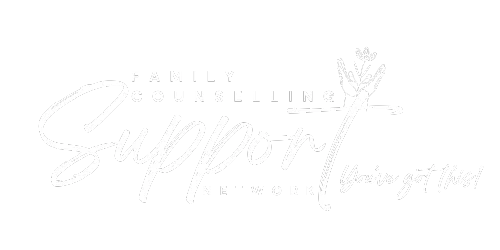


We are committed to protecting your personal information and respecting your privacy. This website uses cookies to analyze website traffic and optimise your website experience. By accepting our use of cookies, your data will be aggregated with all other user data.
DISCLAIMER: The material contained on this website is for general educational and information purposes only and is not a substitute for professional legal, financial, medical or psychological advice or care. While every care has been taken in the information provided, no legal responsibility or liability is accepted, warranted or implied by the authors or Family Counselling Support Network and any liability is hereby expressly disclaimed. For specific advice please contact us at [email protected]. All information contained on the website remains the intellectual property of Family Counselling Support Network and is for your personal educational use only. The information must not be reproduced or distributed without the express permission of Family Counselling Support Network.
Family Counselling Support Network acknowledges and respects the First Nations Custodians of the land where our offices stand, and where we work to help Australians. We pay respects to their Elders, past present and emerging, lore, customs and creation spirits. We recognise that these lands have always been places of ceremony, teaching, research and learning, and we acknowledge the important role Aboriginal and Torres Strait Islander peoples play in our community.
We are committed to providing an inclusive and accessible environment where people and communities of all identities and backgrounds are accepted, safe and celebrated.
Privacy Policy | Terms and Conditions
